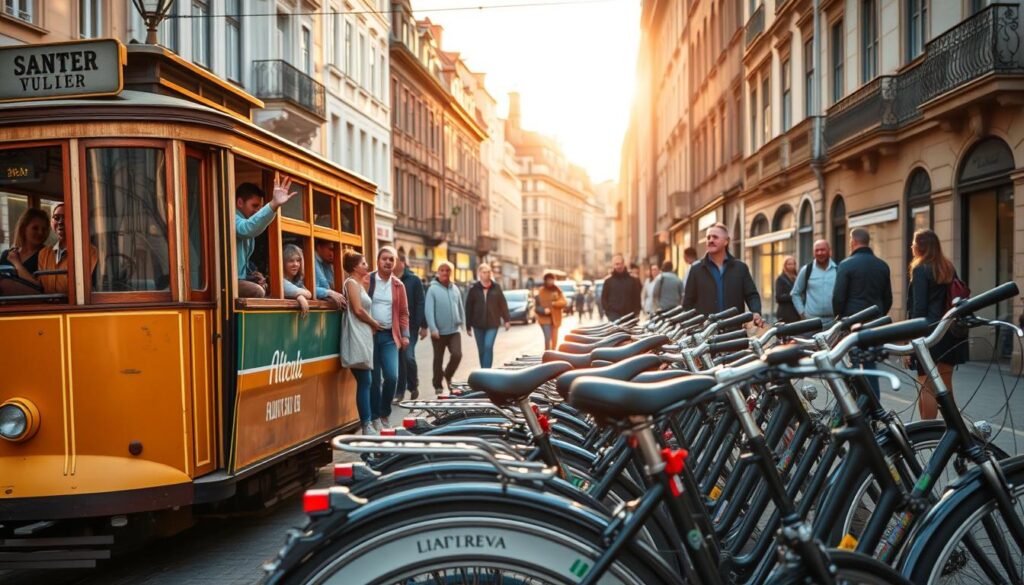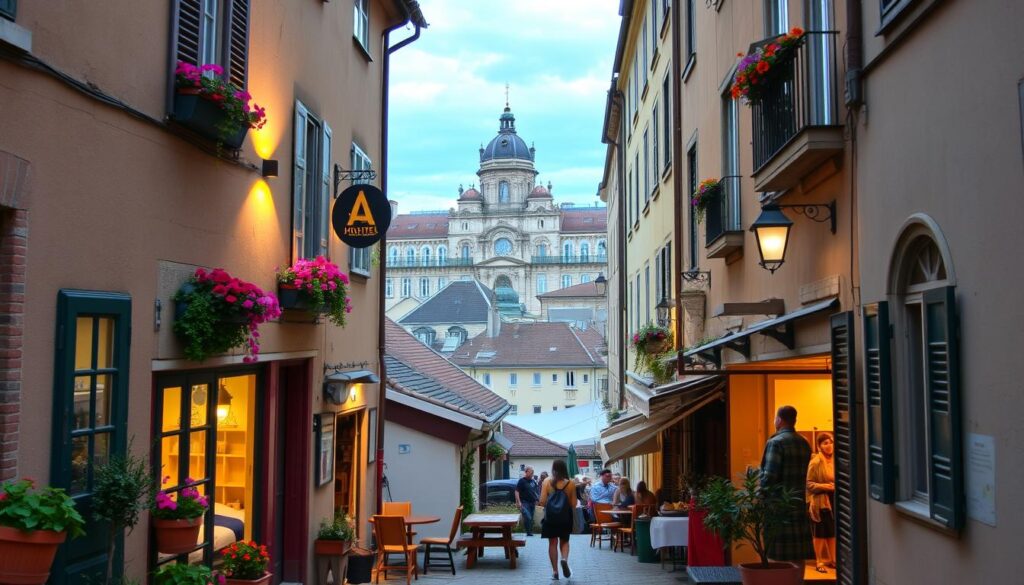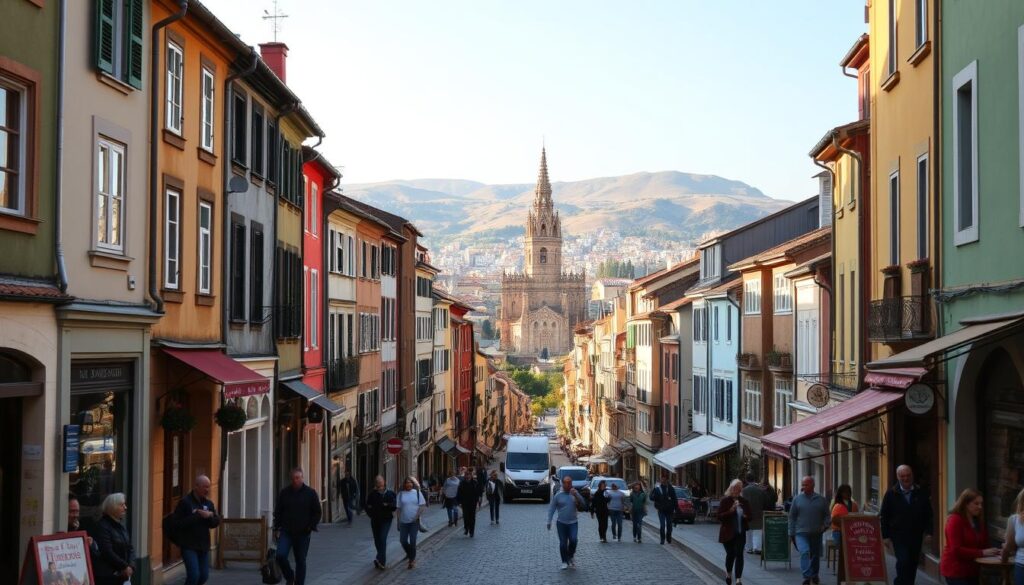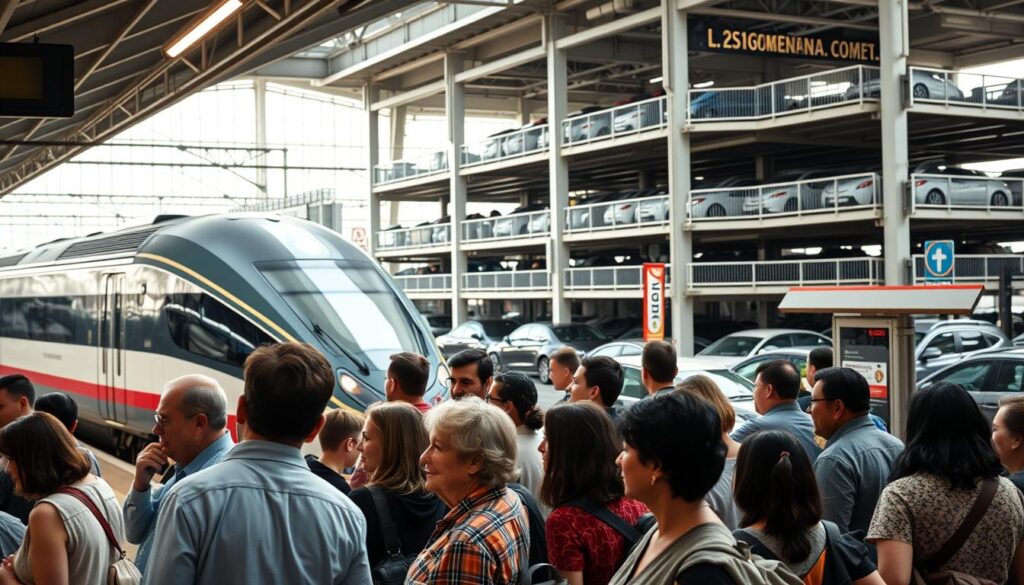How to Travel Europe on a Budget
Did you know travelers can experience Bulgaria’s mountain villages for just $25 a day – less than half the cost of popular Western cities like Berlin? While many assume this continent is only for luxury seekers, smart planning unlocks unforgettable adventures at prices that’ll make you rethink everything.
Daily expenses vary wildly across regions. Eastern destinations offer hostels and hearty meals under $10, while iconic capitals demand smarter strategies. The secret lies in mixing value-packed locations with clever hacks – like timing your trip or using local transit passes.
This guide reveals how to stretch your dollars further without skipping must-see spots. You’ll learn to snag flights during off-peak seasons, find cozy stays beyond tourist zones, and enjoy free walking tours that beat pricey group excursions. Even foodies can savor authentic flavors through market visits and lunch specials.
Key Takeaways
- Eastern European countries provide 50%+ savings compared to Western hotspots
- Strategic timing reduces flight and accommodation costs by hundreds
- Local transportation passes often cost less than three metro rides
- Free attractions like historic districts and parks abound in every city
- Meal costs drop significantly when eating where residents dine
Planning Your Trip and Setting a Realistic Budget

Crafting a budget-friendly adventure starts long before you pack your bags. Knowing where your money goes transforms guesswork into actionable plans. Let’s dive into the numbers that shape unforgettable journeys.
Breaking Down Your Travel Expenses
Smart travelers compare costs like pros. Check this breakdown of daily averages:
| Category | Budget Option | Mid-Range | Luxury |
|---|---|---|---|
| Accommodation | $15-50 | $150+ | $300+ |
| Meals | $10-25 | $40-70 | $100+ |
| Transport | $0-10 | $15-25 | $30+ |
Hostels beat hotels by $100+ nightly – that’s three free museum tickets or a regional train ride. Cooking breakfast saves enough for afternoon gelato runs. As one backpacker shared: “Eating where locals lunch cut my food budget by 60% overnight.”
Monthly Savings and Pre-Trip Research
Start saving early. A $3,000 trip needs $333 monthly for nine months. Use these tools:
- Google Flights’ price tracking for deals
- Hostelworld filters for budget stays
- City tourism sites for free event calendars
Credit card points can slash flight costs, but always pay balances monthly. One hour of research weekly often uncovers hidden gems like free walking tours or discounted attraction passes.
Europe on a Budget: Transportation and Flights Tips

Your transportation choices make or break your spending. Savvy travelers mix low-cost carriers with ground options to slash expenses while covering more ground. Let’s explore how to move between destinations without draining your wallet.
Mastering Budget Airline Strategies
Carriers like Ryanair and EasyJet advertise $23 tickets, but watch for hidden costs. One backpacker learned the hard way: “My ‘cheap’ $30 flight became $120 after adding luggage and seat selection.” Always compare total prices across platforms like Skyscanner.
Fly midweek for better deals – Tuesday afternoon flights often cost 40% less than weekend departures. Consider alternative airports too. Flying into Paris Beauvais instead of Charles de Gaulle can save $150+ for a short train ride into the city.
Ground Transportation Goldmines
Second-class train seats deliver first-rate savings. A Munich-to-Vienna journey costs $48 in second class versus $92 upfront for first. Regional buses shine for shorter hops – Megabus offers London-to-Edinburgh rides for $25 when booked early.
Rail passes tempt frequent travelers, but crunch the numbers first. The Eurail Global Pass averages $95 daily – only worthwhile if taking multiple high-speed trains. For spontaneous trips, buying individual tickets often works better.
Finding Affordable Accommodations in Europe

Where you sleep at night shouldn’t drain your wallet. Modern travelers have more options than ever – from social hostels to unique cultural exchanges. The right choice depends on your comfort level, group size, and willingness to explore alternatives.
Sleep Smart: Social Stays and Shared Spaces
Hostels remain champions of budget stays. A solo traveler recently shared: “My $18 dorm bed in Prague included free breakfast and walking tours – I met hiking partners for the next day!” Many offer private rooms too, blending savings with privacy.
| Accommodation Type | Average Cost | Best For | Perks |
|---|---|---|---|
| Hostel Dorms | $15-30 | Solo travelers | Social events, central locations |
| Couchsurfing | Free | Adventurous types | Local insights, cultural exchange |
| Airbnb Shared | $25-50 | Small groups | Kitchen access, local neighborhoods |
Timing Is Everything
Booking between November and March often cuts prices by half. A Lisbon hostel that costs $45 in July drops to $22 in January. Locations matter too – staying near metro stops outside city centers saves money without adding commute time.
Creative options like housesitting let you stay free while caring for pets. Work exchanges trade daily tasks for lodging – perfect for flexible schedules. As one traveler noted: “I tended olive groves in Tuscany for 4 hours daily and slept in a villa!”
Savoring Local Cuisine Without Overspending

Your taste buds don’t need to suffer for your wallet to stay happy. The best culinary experiences often hide in plain sight – you just need to know where locals go when they’re craving authentic flavors without tourist prices.
Eating Like a Local: Markets and Street Food
Neighborhood markets are goldmines for fresh, affordable meals. Grab a crusty baguette from Parisian boulangeries for €1.50 or feast on €3 gyros in Athens. One traveler raved: “Lisbon’s Time Out Market let me try six Portuguese dishes for less than a sit-down restaurant meal!”
Street vendors offer more than quick bites – they’re cultural experiences. Berlin’s Turkish döner stands serve hearty €4 lunches, while Naples’ pizza al taglio (by the slice) spots charge €2.50 for wood-fired perfection.
Restaurant Hacks and Happy Hour Secrets
Timing transforms dining costs. Madrid’s menú del día delivers three courses with wine for €12-15 at lunch – the same meal doubles at dinner. In Rome, avoid eateries near the Colosseum and seek family-run trattorias where handwritten menus signal authentic fare.
Spain’s tapas culture turns drinks into meals – order a €3 caña beer in Granada and get free patatas bravas. Venice’s bacari bars serve cicchetti (small plates) for €1.50 during aperitivo hour. As one food lover advised: “House wines always deliver quality without the markup – I’ve never paid more than €5 a glass.”
Exploring Must-See European Cities on a Budget

Smart explorers know iconic landmarks don’t require luxury price tags. Choosing where to visit – and when – can slash expenses while delivering unforgettable cultural immersion.
Eastern vs. Western Europe: Cost Comparisons
Your money stretches dramatically farther east of Vienna. A three-course dinner costing €50 in Paris drops to €15 in Budapest. Check these daily averages:
| City | Accommodation | Meals | Attractions |
|---|---|---|---|
| Prague | $22 | $14 | $8 |
| Paris | $95 | $42 | $18 |
| Budapest | $18 | $12 | $5 |
| Amsterdam | $110 | $38 | $15 |
Non-Eurozone countries add extra savings. Poland’s złoty buys 30% more than euros for meals and lodging. As one traveler noted: “My Kraków hostel cost less than a museum ticket in London.”
Hidden Gems Beyond the Tourist Hotspots
Swap crowded capitals for underrated destinations. Slovenia’s Ljubljana charms visitors with castle views and €2 coffees. Romania’s Transylvania region offers medieval towns with $12 boutique stays.
Even in expensive countries, alternatives exist. France’s Lyon delivers Parisian flair with €18 bistro menus. Scotland’s Glasgow provides Edinburgh’s culture at 60% lower hotel rates.
Timing matters too. Visiting Barcelona in May or September cuts accommodation costs by 40% compared to summer. As one savvy explorer shared: “I had Dubrovnik’s ancient walls to myself at sunrise – in November!”
Smart Transportation: Trains, Buses, and Carpooling Tips

Smart transit choices transform expensive journeys into affordable adventures. Whether zipping between capitals or exploring countryside routes, the right strategy keeps more cash in your pocket for memorable experiences.
Rail Passes and Second-Class Ticket Savings
High-speed trains like France’s TGV hit 217 mph while offering spacious seating. Second-class tickets deliver nearly identical comfort at 50% lower prices. A Paris-to-Lyon ride costs €25 in second class versus €50 upfront for first.
| Transport Type | Average Cost | Best For | Booking Tip |
|---|---|---|---|
| Regional Trains | $15-40 | Scenic routes | Use RailEurope for multi-country passes |
| Intercity Buses | $10-25 | Short distances | Book Megabus 45+ days early |
| Car Rental | $35/day | Groups of 4+ | Compare Auto Europe & local agencies |
Rail passes shine for cross-country trips but require math. The Eurail Global Pass averages $95 daily – worthwhile only if taking 3+ high-speed routes weekly. Seat61.com offers updated timetables and hidden deals.
Affordable Bus Routes and Car Rentals
Bus networks connect 90% of urban centers at rock-bottom prices. Eurolines’ Amsterdam-to-Berlin route costs $19, while FlixBus offers $12 fares between Italian cities. One traveler shared: “My $15 overnight bus saved a night’s accommodation – I arrived refreshed!”
Car rentals make sense for rural exploration. Split between four people, a $35 daily compact car becomes $8.75 each. Always check insurance coverage and fuel policies. As one road-tripper advised: “Stick to manual transmissions – automatics cost 40% more.”
Discovering Free and Low-Cost Attractions Across Europe
Uncovering memorable experiences doesn’t require deep pockets. Many iconic spots offer free access or creative alternatives to pricey tickets. Let’s explore how to enjoy rich cultural moments while keeping your spending minimal.
Guided Adventures That Respect Your Budget
Sandemans New Europe transformed sightseeing with pay-what-you-want walking tours across 18 cities. Their 3-hour excursions reveal hidden stories about historic districts. As one traveler noted: “Our guide explained Prague’s Astronomical Clock secrets – I tipped €10 for knowledge worth triple!”
Download Rick Steves’ audio guides before arriving. These free narrations turn self-guided walks into expert-led journeys through Rome’s cobblestone alleys or Lisbon’s hilltop vistas.
Cultural Gems Beyond Ticket Booths
Time visits to match free museum hours. London’s British Museum never charges entry, while Paris offers free access to under-26 EU residents. Outdoor treasures abound too – hike Cinque Terre’s coastal trails or marvel at Barcelona’s Gaudi architecture for zero cost.
Local festivals deliver authentic fun without tourist markups. Kraków’s summer jazz nights fill medieval squares with free music. Bergen’s fish market turns into a cultural stage during folk celebrations.
FAQ
How can I save on flights within Europe?
Are hostels safe for solo travelers?
What’s the cheapest way to eat in cities like Paris or Rome?
Is Eastern Europe really more budget-friendly than Western Europe?
Are rail passes worth it for multi-country trips?
How do I find free attractions in popular cities?
What’s the best time to visit for lower prices?
Can I explore Europe without renting a car?

Eduard Kingly is a travel and lifestyle content creator with a focus on personal development and education. He combines firsthand travel experiences with research-driven insights to guide readers in discovering new places, building better habits, and pursuing meaningful learning.




